There are a number of factors that led me to choose Hatakeyama as one of the three photographic artists for this exercise. One is a conversation with a colleague about ‘future heritage’ (those elements of the present or near future that are likely to constitute heritage in the future) and how we identify, represent, preserve and curate this. What of the present will be of value in the future? What do we need to know/imagine of the future to be able to assess this? What is the relationship between attribution of future value in the present and realisation of value in the future? A second factor is the nature of my projected FMP, which involves making images in the present in urban contexts that are undergoing change and development and which thus face an uncertain future (the projected image of which is dominated by CGI presentations produced by developers). The third factor is a shared interest in using images to investigate ‘the relationship between nature and contemporary residential environments’ (Fujii n.d.). Finally, on a visit to Aperture in New York, I came across the newly published Excavating the Future City, a survey of Hatakeyama’s work edited by Nakomori (2018). The title alone made it an essential read. I was also interested in his methods of working and his use of a journal (McLaren & Formhals 2014). In this exercise, I am taking the opportunity to become familiar with a body of work that is new to me, and to relate this to the development of my own practice as a photographer.
Nakamori (2018), setting the scene for a major career retrospective at the Minneapolis Institute of Art, gives a comprehensive account of the development of Hatakeyama’s work. This includes an analysis of the influence of western photography (predominantly American) and theory (predominantly European) on Japanese photography in the 1970’s and 80’s, when Hatakeyama was studying at Tsukuba University. There are distinct differences in western and Japanese conceptions of ‘landscape’. Hatakeyama, influenced by the New Topographics approach gaining attention in Japan at the time, sought to subvert the traditional Japanese association of landscape with national identity in his exploration of the relationship between the land and human activity. This is most marked when looking at the relationship between his photographic studies of lime quarrying around his home city of Rikuzentakata, and his work on urban development in Tokyo and Yokohama.
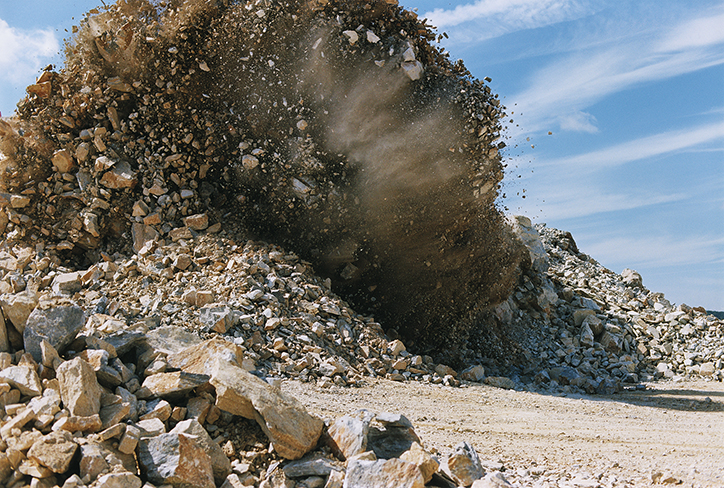
A key characteristic of this work is the implied inter-relationship between the violence done to the rural landscape by extraction and rapid urban development in Japan. These become two intertwined processes.
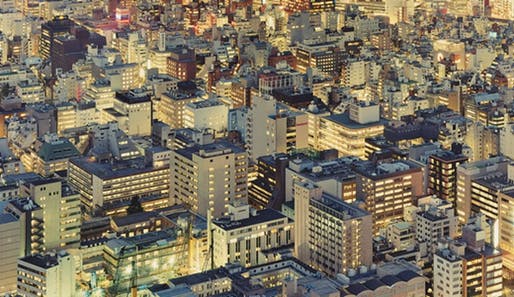
He works at two levels in both settings, rising above the landscape and city in the Lime Hills and Untitled series, and excavating below the surface in the Blast and River series. Through this work he charts the subtle changes taking place over time in the city, whilst acknowledging the immanence of the future city in the processes of extraction and growth from that which exists below the surface in both rural and urban settings. In this sense, his work can be seen as ‘excavating the future’, with the camera as the instrument of extraction. This places Hatakeyama a substantial distance from the Japanese tradition of celebration of the landscape as an expression of national identity and spiritual unity. To a degree, his work can be seen as an environmental equivalent to the social and cultural subversion of the Provoke movement.
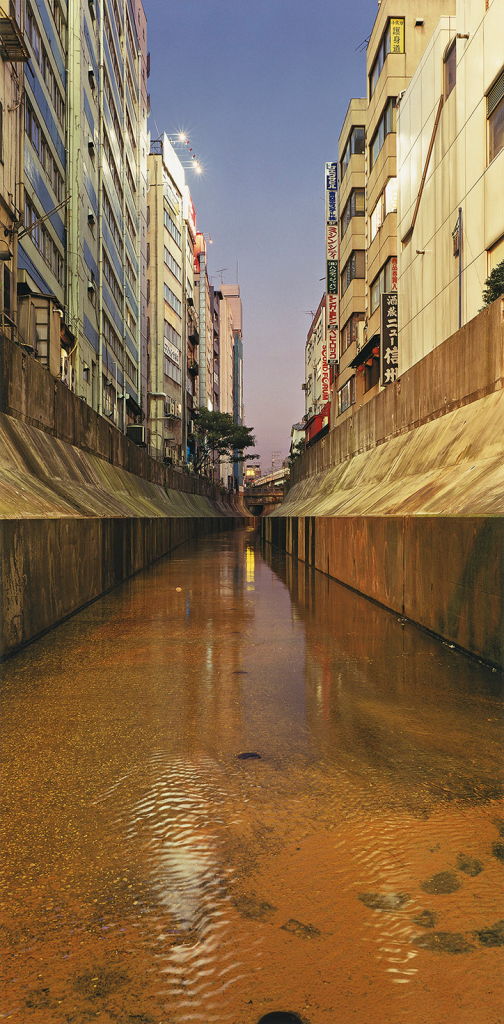
The tragedy of the 2011 Tōhoku earthquake and subsequent tsunami took Hatakeyama back to his hometown, which initiated a new era in his work. Over a period of 8 years (to date) he has has portrayed the rebuilding through human endeavour of a town almost completely destroyed, a body of work which he describes as a ‘biographical landscape’. This builds on his earlier work (though it is very different in terms of method and timescale) on the relationship between landscape (nature) and city (human) by tracing the lifecycle of a city regrowing out of devastation, in a way that transcends the particularities of this one specific place, and addresses more generally the topographic transformation of Japan, and associated global environmental questions about the relationship between the land and human activity. As Nakamori (2018) notes, this also marks a distinct shift in the position of Hatakeyama as an image maker, from a marked distance from the rural landscape and urban cityscape to one of intimate engagement with managing the present and imagining and shaping the future city.
Returning to a theme introduced in my discussion of Sugimoto’s work, this recent work by Hatakeyama, albeit in tragic circumstances, exemplifies the process of entanglement with the world, and the place that image making can play in making sense of this. The flow of extraction and urban development is interrupted and thus becomes open to analytic scrutiny. Instead of having to dig down beneath the land and the city, the city is opened up and we are forced to engage in its rebuilding in full awareness of its precariousness. The sense of hope and optimism is remarkable in a body of work (comprising, to date, of over 8000 images) arising from a catastrophic event, in which Hatakeyama’s family home was destroyed and in which his mother lost her life.
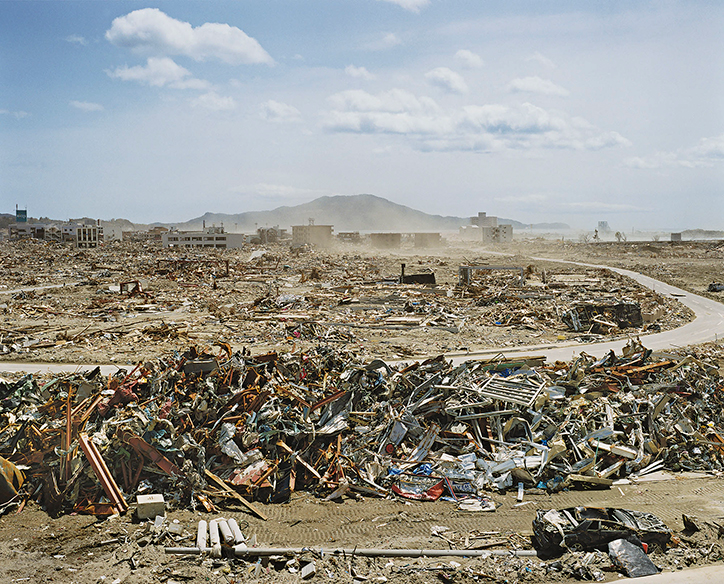
Whilst each of Hatakeyama’s series of photographs is tightly framed conceptually and methodologically, serendipity (see Bird series, in which the flight path of a small bird is traced through several frames from the Blast series) and experiment (see Slow Glass series in which he designed a large format camera specifically to explore photographing cityscapes through rain) also play a part.
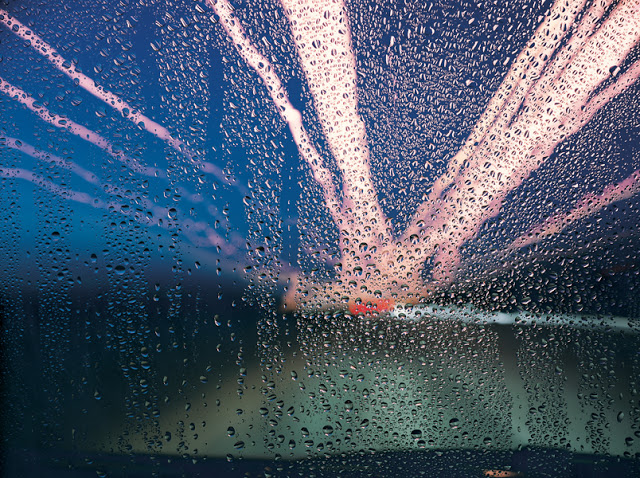
He keeps a daily journal, which whilst not explicitly concerned with the development of his projects, charts the development of ideas, and acts as a resource on which to draw in the evolution of his work. The section on Hatakeyama in McLaren & Formhals (2014) Photographers’ Sketchbooks provides examples of the sketches and notes produced in the development of the camera for the Slow Glass series and about the logistics of one of the underground shoots, giving insight into his processes.
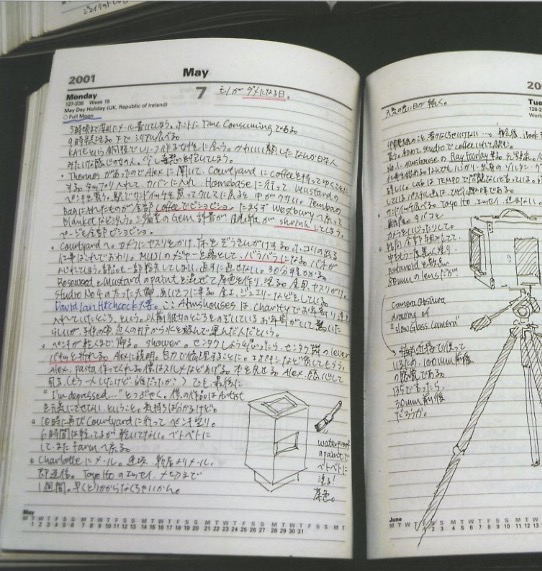
Further insight is given by Hatakeyama’s own writing on photography. In ‘The Photographer and Architecture’ he reflects on his current practice:
‘I walk. As usual, there are things in the field of vision before me. As I walk, they change in size and shape. Light and space, as sensation, not only exists before me, but also envelops me, moves me, and makes me happy. The, important faces and words suddenly come back to me from the past. I put my camera on a tripod, direct the lens towards a thing, and think, ” There are so many things in the world that cannot be photographed.” Yet, I release the shutter, because if I didn’t take a photograph, I would not have known this very fact. Photography is like a ship carrying light and space and heading toward the future.’ (Hatakeyama, 2018: 266).
Reflecting on Hatakeyama’s practice in relation to the development of my own work, highlights a number of issues. Hatakeyama’s background and education in the arts, at a particular time in the cultural and economic development of Japan, enables him to position what he does both in relation to major artistic movements in the west and their recontextualisation at a particular point in time in Japan. His close relationship with architecture and the centrality of the theme of urban development makes his work fundamentally inter-disciplinary. This gives a complexity to his work. Though I share a number of these core interests, my background and context is very different, and I need to consider how I position what I do as a photographer in relation to these other aspects of my practice and expertise. Hatakeyama is able to achieve a high degree of consistency of image making and conceptual coherence in each of the series he has produced since completing his formal education in the arts, something that is lacking in my work. Whilst this is understandable in terms of maturity of practice, it is an important aspiration and requires development. Hatakeyama’s work is also impressive in the extent to which the successive series of photographs are distinct (in form and context) but related, marking out a clear (but not over-determined) trajectory. In an interview with architect Rob Hutchinson (published online in 2015, but the interview was conducted in 2010, before the Tōhoku earthquake) Hatakeyama explicitly explores the issue of consistency and coherence of artistic practice. In response to a question about the relationship of the Slow Glass series (which involved experimental development of a large format camera – see notebook extract above) and his other work, Hatakeyama says:
‘That is a very good question. Because that is a question of consistency of artistic practice. Viewers always expect a consistency of work from one artist. Some artists are repeating only one thing every day. Like Roman Opalka from France, he is just drawing the same number every day, and he makes a self portrait every day, for 45 years or so. It is so wonderful in a sense, but I am not the kind of artist of that type. My interest is having, or creating, my own vocabulary of photography, as many as possible. So from my young days, I was always trying to do that. In 2002, I made a one-man show in Germany. After the hanging of all of the works, to my eyes it looked like a group show, not a one-man show. I had many different works. So my impression was, “oh, this is a kind of group show!”. And I enjoyed that. So maybe I am trying to make my vocabulary richer. And maybe I was trying to write one poem, or one short story, with those vocabularies some day in the future, at the end of my life’ (Hatakeyama in Hutchinson 2015).
His most recent work, which is marked by a more intimate relationship with the environment, and community, following the 2011 Tōhoku earthquake, represents a new phase in his work, drawing on and extending this vocabulary.
Hatakeyama also presents his own writing alongside his images, and this is also explored in the interview with Hutchinson. Hatakeyama sees writing and photography as two distinct, but inter-dependent, modes of expression, with primacy placed on language. He states that:
‘words and images are different things, I know this. But they support each other. And if we don’t have words, we cannot see the world, we cannot even have the image’ (Hatakeyama in Hutchinson 2015).
The proposal for my project anticipates use of a range of media, including text. Exploration of the relationship between text and image is something that I intend to explore further over the course of this module.
References
Fujii, Y. n.d. ‘Naoya Hatakeyama’. Ocula [online]. Available at: https://ocula.com/artists/naoya-hatakeyama [accessed 04/01/19].
Hatakeyama, N. 2018. ‘The Photographer and Architecture’. In Y. Nakamori, Naoya Hatakeyama: Excavating the Future City. New York: Aperture:259-266.
Hutchison, R. 2015. ‘A Conversation with Photographer Naoya Hatakeyama’. Interview, 24th September 2010 at Taka Ishii Gallery, Kiyosumi, Tokyo [online]. Available at: http://robhutcharch.com/blog/2015/1/31/a-conversation-with-photographer-naoya-hatakeyama [accessed 04/01/19].
McLaren, S. & B. Formhals. 2014. Photographers’ Sketchbooks. London: Thames & Hudson: 118-125.
Nakamori, Y. 2018. Naoya Hatakeyama: Excavating the Future City. New York: Aperture.
